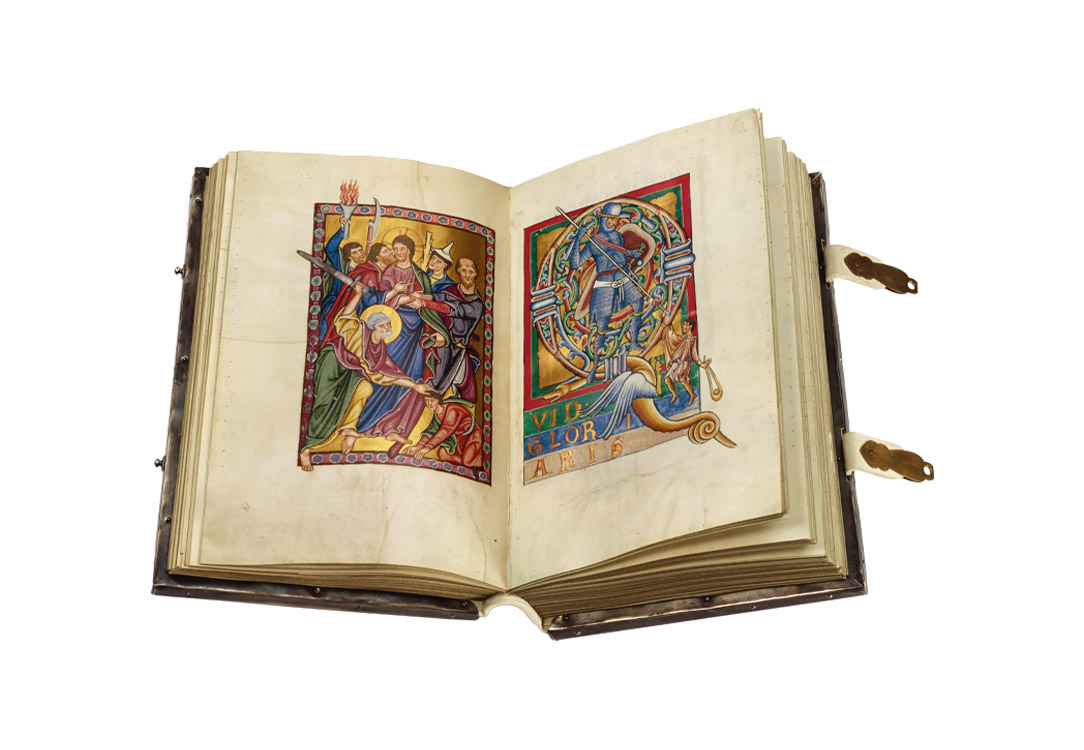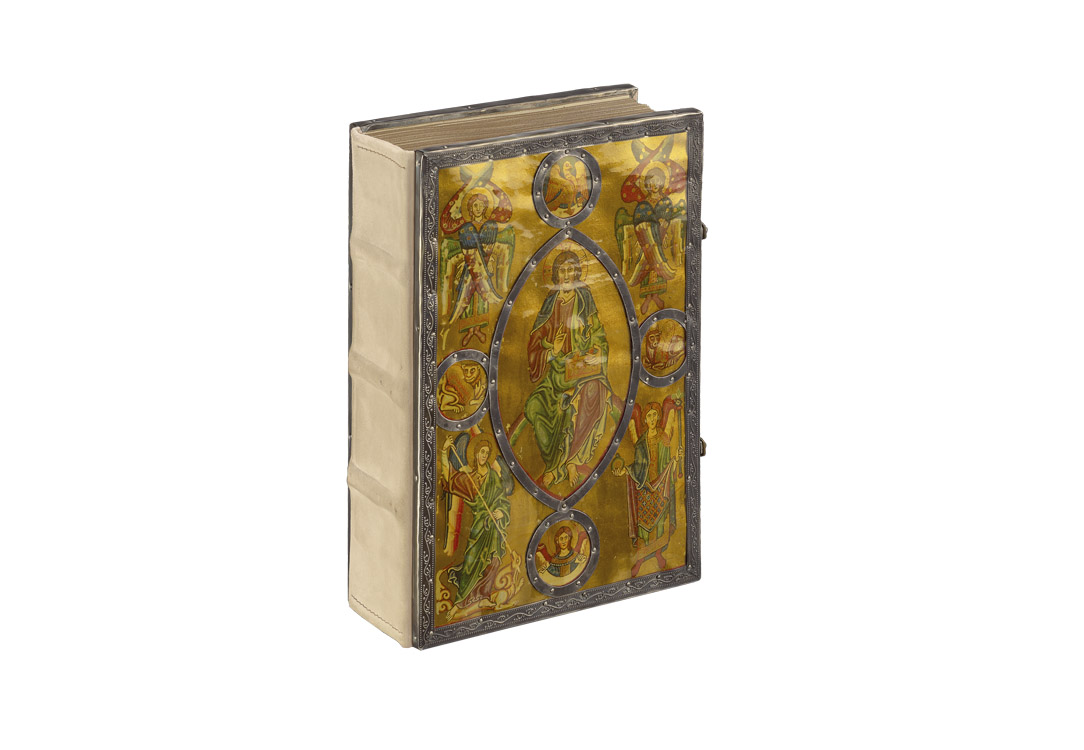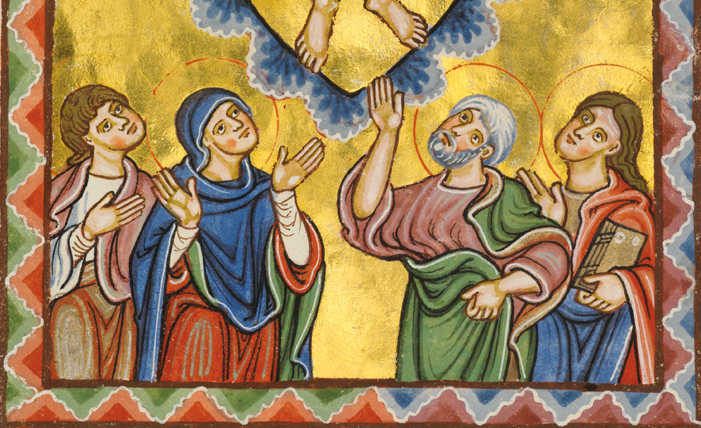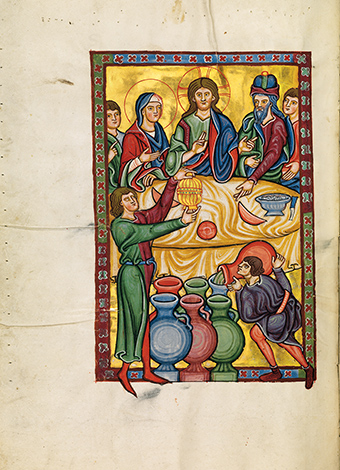The Bamberg Psalter
A Unique Jewel of a Book
This psalter is certainly one of the “most valuable manuscripts of the Middle Ages. It dates from the time when the Cathedral of Bamberg was being built … and is an important object of our European cultural heritage. [The great art historian] Wilhelm Messerer called it ‘the summit of all Bamberg art’.” (Most Rev. Dr. Ludwig Schick, Archbishop of Bamberg)
Bamberg Psalter
The Bamberg Psalter: The Manuscript
A Harmonious Whole
The Bamberg Psalter, which dates from around 1230, is the result of a perfect collaboration between two artistically outstanding masters of the illuminated manuscript who belonged to different traditions, and whose juxtaposition and coexistence documents the stylistic change from the Romanesque to the Gothic. They show themselves as being open to the new currents, and it is charming to discover how their light-flooded images fuse older stylistic forms with new ones. Another harmonious unity is formed by the exclusive horn binding and the radiant golden paintings of the manuscript. This is because the motifs of the miniatures relating to Christ and the Virgin Mary beneath the horn plates on the binding complete the three pictorial cycles inside the Bamberg Psalter.
Articulating Splendour
The lavishly decorated illuminated pages of the Bamberg Psalter captivate the viewer just as much as its eye-catching cover. The main decoration consists of fifteen full-page miniatures with scenes from the New Testament in three cycles of five miniatures each. There are also eight full-page entwined gold initials that divide the Psalter into eight liturgical sections. By contrast, three pages of colourful initials emphasise the openings of Psalm 1, Psalm 51 and Psalm 100, and thereby highlight the tripartite division of the book that was commonly used since the days of the Church Fathers. All the 150 psalms begin with a multi-line gold initial on a colourful ground; the verses always start on a new line with an initial, also of gold.
A Mysterious Lady
The question of who commissioned the Bamberg Psalter can no longer be answered. It is indisputable that the Psalter was intended for the private devotions of a high-ranking figure. Lavish psalters were often associated with aristocratic ladies. The figurative initial “I” at the beginning of Psalm 86 depicts a woman praying in gold on a blue-and-green ground (fol. 99v). That could be read as a reference to the patroness of the manuscript. In the calendar (fol. 3v), the murder of Count Gebhard von Hirschberg (d. 1245) is indicated on the 5th of June, and this provides material for speculation about the familial origins of the patroness. Her precise relationship to the knight on fol. 135v remains her secret, however.
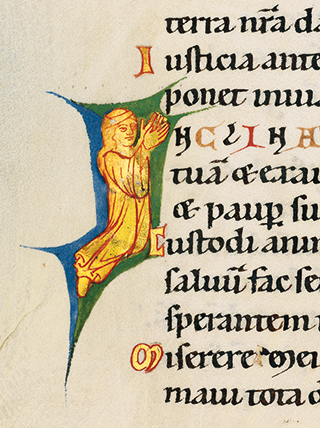
Bamberg Psalter
Under the Magnifying Glass: Manuscript Illumination Transitioning from the Romanesque to the Gothic
Bamberg Psalter
The Bamberg Psalter: The Edition

The Manuscript and the Facsimile at a Glance
The Bamberg Psalter is fascinating for the splendid colour of its illuminations. Every page, as well as its cover, seems to have been dipped in gold light. The contemporary horn-plate binding is a great rarity, and its faithful reproduction turns this facsimile edition of the most beautiful German manuscript psalter of the thirteenth century into something unique.
Manuscript: Bamberg, Staatsbibliothek, Msc.Bibl.48
Date of Origin: c. 1230
Place of Origin: Regensburg (or Bamberg ?)
Dimensions: c. 26,0 x 18,0 cm
Extent: 420 pages (210 folios)
Artists: two master illuminators
Patron: unknown
Illumination: 15 full-page miniatures on gold ground in 3 cycles of 5 miniatures each, 8 full-page gold decorative initials, and 3 full-page historiated decorative initials, 256 single-line gold initials, 24 calendar medallions
Binding: Sheet-horn binding with multi-part gilded miniatures on the front and back covers
Commentary Volume for the Facsimile Edition by Karin Eckstein / David Ganz / Sibylle Ruß / Bettina Wagner
Print run: 280 copies
This facsimile edition has been published under the great patronage of the Most Reverend Dr. Ludwig Schick, Archbishop of Bamberg.
Bamberg Psalter
Enjoy Viewing 10 Sample Pages:
A Glance at the Facsimile Manuscript
The excerpt from the Bamberg Psalter chosen to be leafed through here reproduces the sequence of fols. 6r–10v.
It features the last two pages of the calendar, the months of November and December (fols. 6r–v); the first five-page cycle of miniatures with scenes from the childhood of Christ (fols. 7v–9v: The Annunciation to the Virgin, the Birth of Christ, the Adoration of the Magi, the Presentation in the Temple, and the Baptism of Christ) as well as the opening of Psalm 1 with its decorative initial B (fol. 10r) and the page of text that follows it (fol. 10v).
Bamberg Psalter
A Challenging Production: fac simile
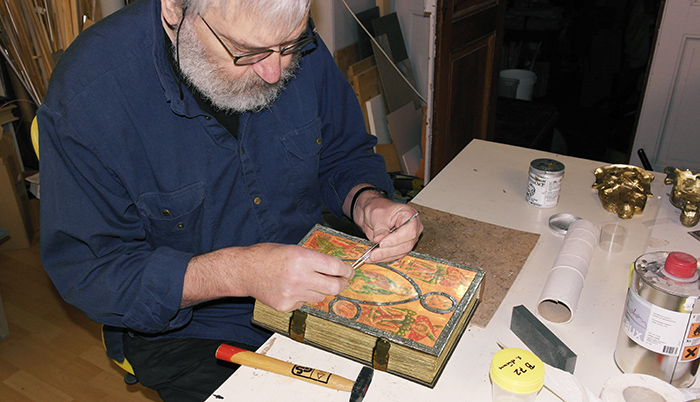
The Art of the Facsimile Binding
When producing the facsimile of the Bamberg Psalter, the reproduction of the horn-plate binding represented a particular challenge. Mastering it required many years of experience with facsimiles. It was especially demanding, for example, to harmonise it with the colours of the gilded miniatures on the front and back covers, which shine through the delicate plates of horn. A special technique was developed to replicate the two horn-plate covers to reproduce the plates in a faithful and lifelike way. The chased silver mouldings were reproduced with the same care. All of the work on the binding was a collaboration of the best specialists.
Reproducing Radiant Beauty
The rich manuscript illumination of the Bamberg Psalters fascinates the viewer thanks to the generous use of gold and precious pigments. Their faithful reproduction required all the skill and long experience of the lithographer and printer. The gold in the miniatures, medallions and initials, which is uniquely sparkling and dazzling, was reproduced with the aid of a special technique. The original also makes occasional use of silver, and it likewise looks more or less oxidised on the facsimile. Proofs of all the pages were compared with those of the original on location, corrected, reprinted, and then re-checked again, until final approval for printing was granted.
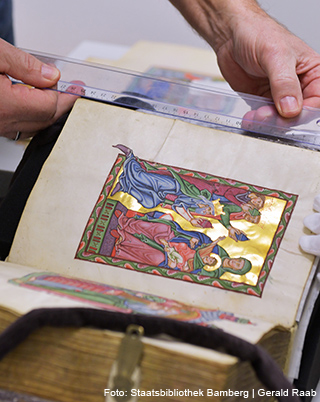
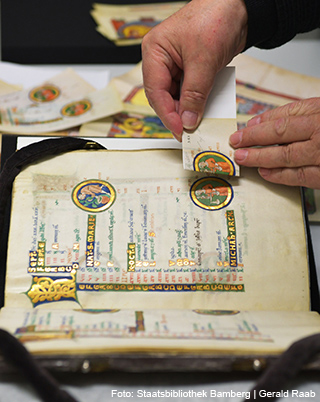
Bamberg Psalter
The Facsimile Folder for the Edition

A documentation brochure offers an introduction to the period of its making and to the magnificent decoration of the Psalter, which has supposedly been in Bamberg for eight hundred years. The brochure also schools the eye for a style of manuscript illumination that is transitioning from the Romanesque to the Gothic, and reveals the stylistic characteristics of the two illustrators involved. The binding of horn plate, which dates from the early thirteenth century and is extremely rare, is explained in detail and, for the first time ever, is reproduced as part of the facsimile.
Bamberger Psalter




